Have you ever heard about the wild pigeons that are larger than the adorable ones that you usually feed in the park? Interestingly enough, these magnificent birds can be found in the forests of New Guinea, Australia. If you get the opportunity to visit this stunning island, you might come across these impressive creatures.
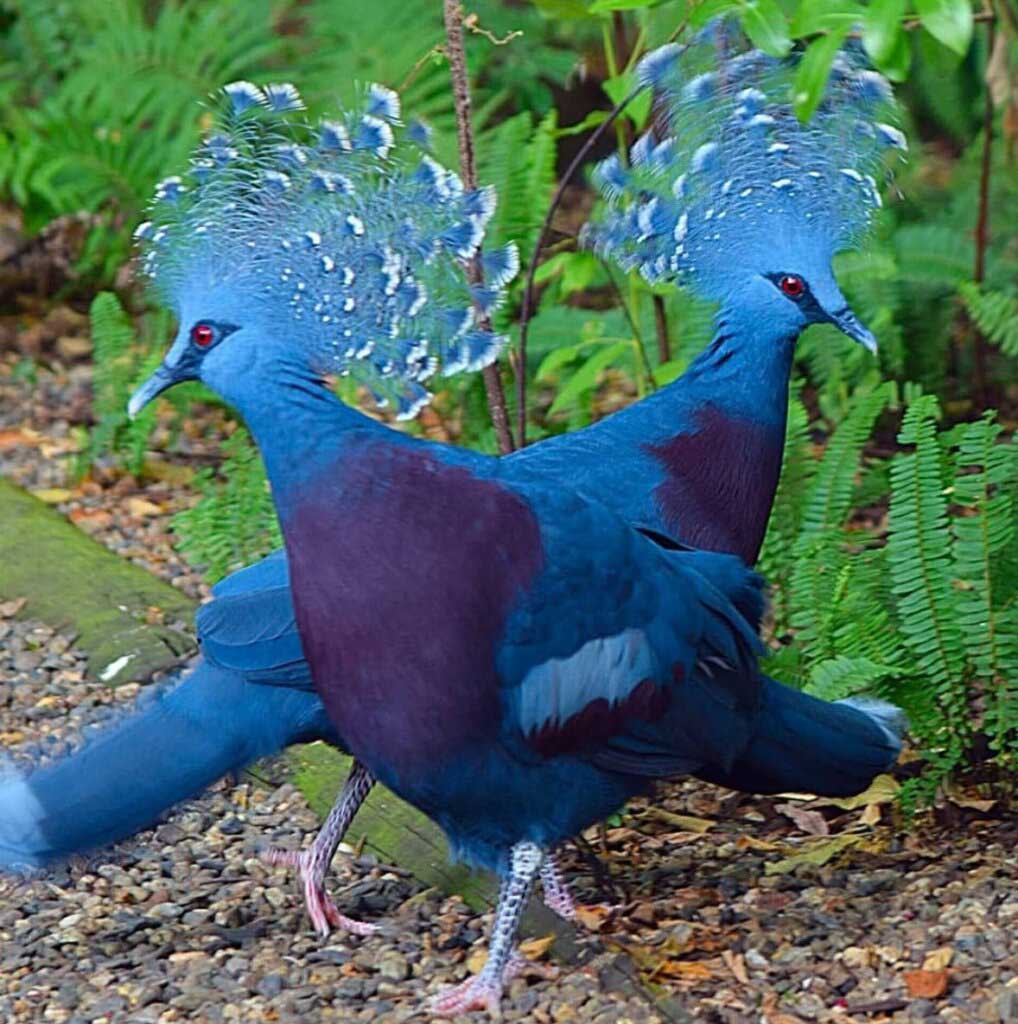
The Goura, also known as crowned pigeons, belong to the family Columbidae and are characterized by their large size. This genus consists of four species of pigeons, including the Western crowned pigeon (Goura cristata), Scheepmaker’s crowned pigeon (Goura scheepmakeri), Sclater’s crowned pigeon (Goura sclaterii), and the Victoria crowned pigeon (Goura victoria) which is the largest one. These birds can grow up to 29 inches in length when they are fully grown adults. Image credits go to Instagram user steve___prince.
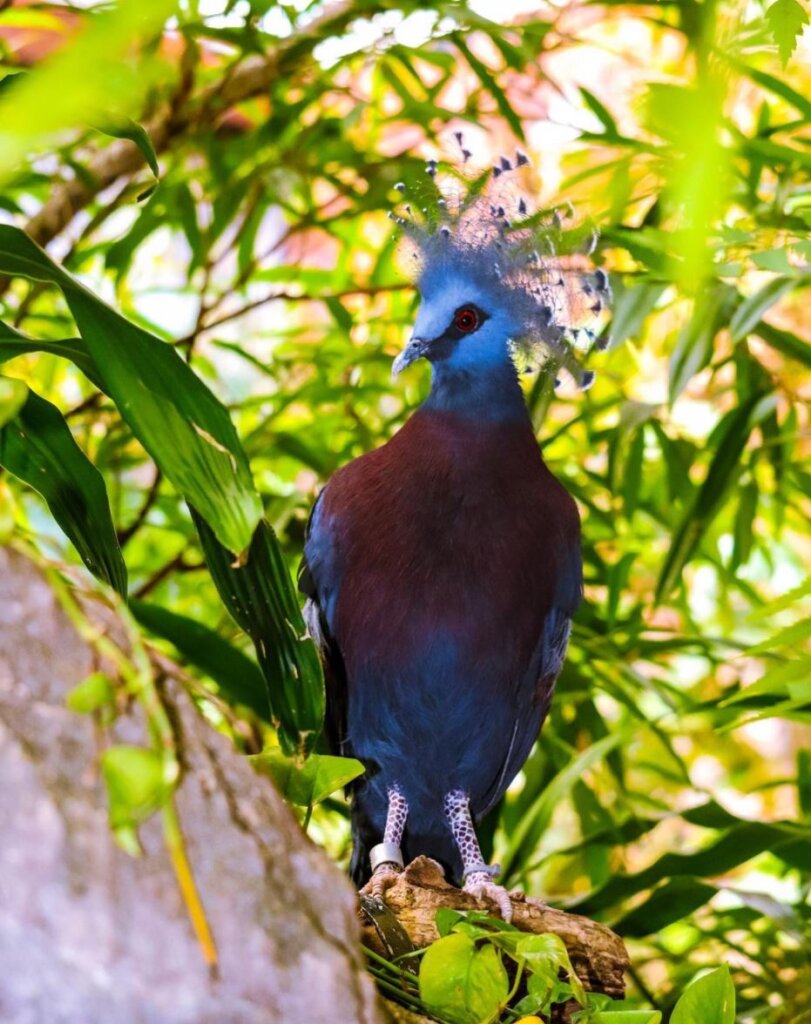
The birds in the picture, despite being of different species, bear a striking resemblance to each other. Both male and female birds share similar physical features, such as beautiful blue feathers, reddish-brown chests, captivating blue crests with white tips on their heads, and piercing red eyes. This makes them distinct from other bird species. The image credits go to karuna.yadav05 on Instagram.
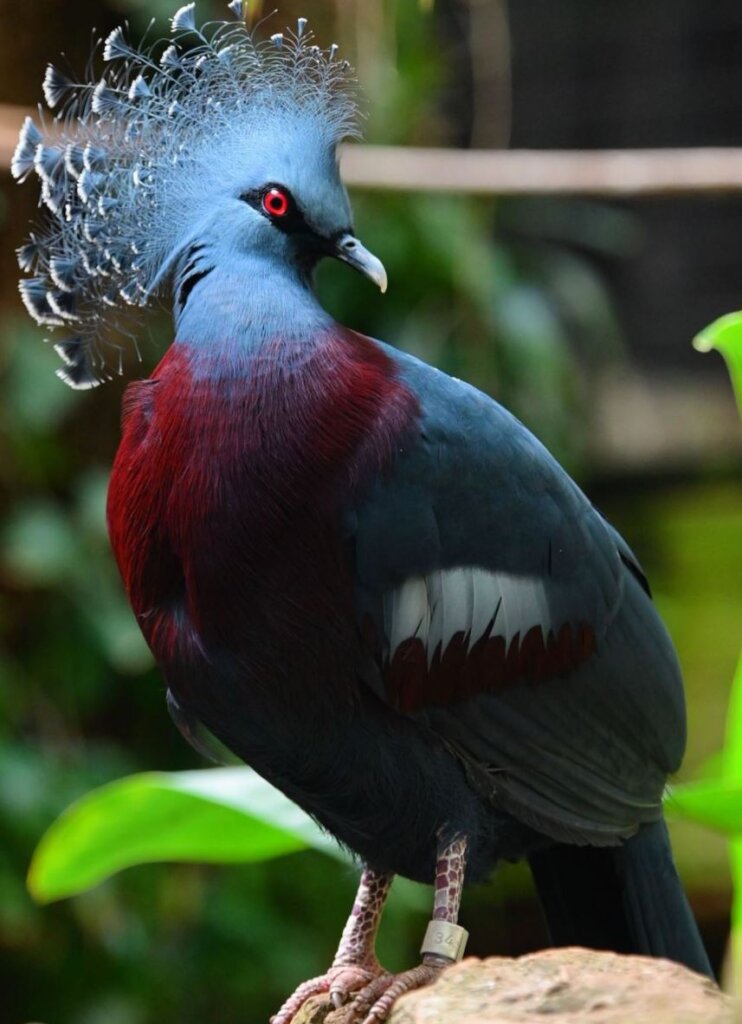
The male and female critters have distinct behavior during courtship, with the male often cooing and bowing to impress the female. Interestingly, these creatures are known for their faithfulness as they tend to remain monogamous throughout their lives. Photo credits go to Yerson Travels on Instagram.
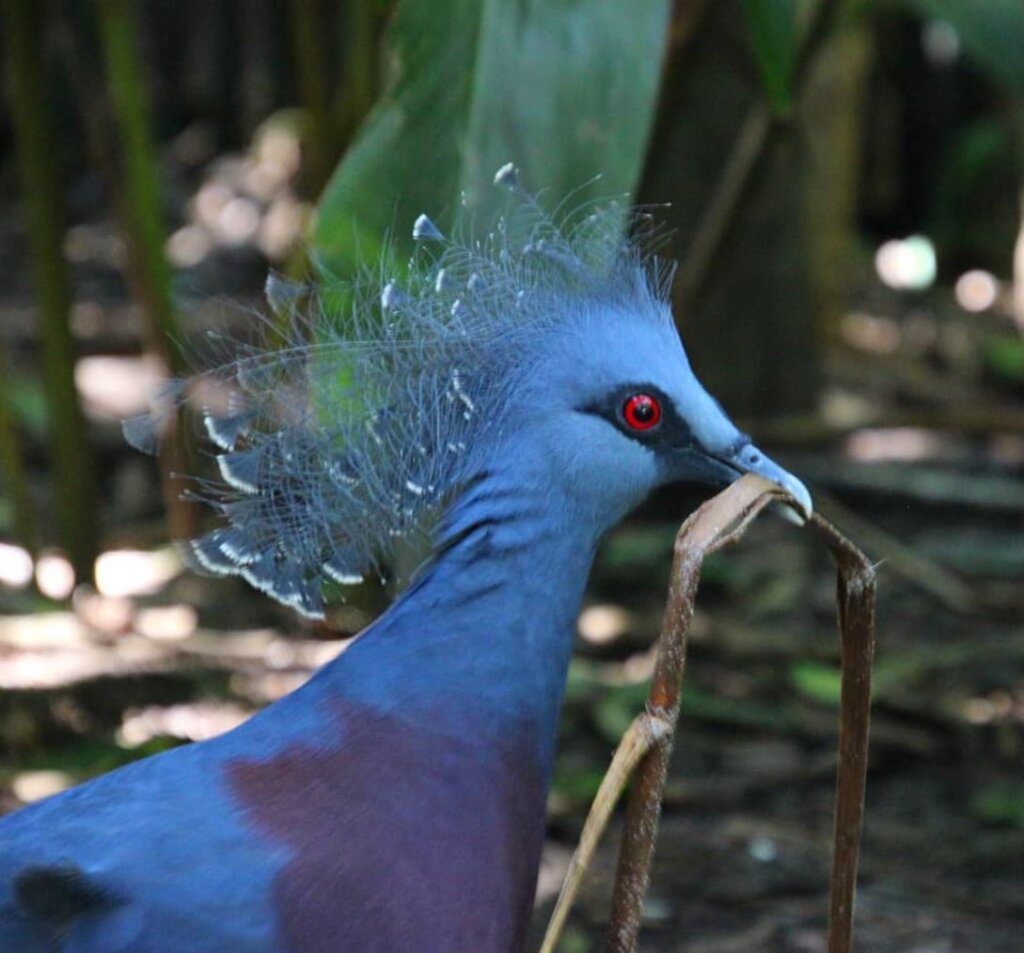
When birds find their ideal mate, they work together to construct a nest and position it on a tree. Together, they take turns incubating the egg for approximately one month until it hatches.
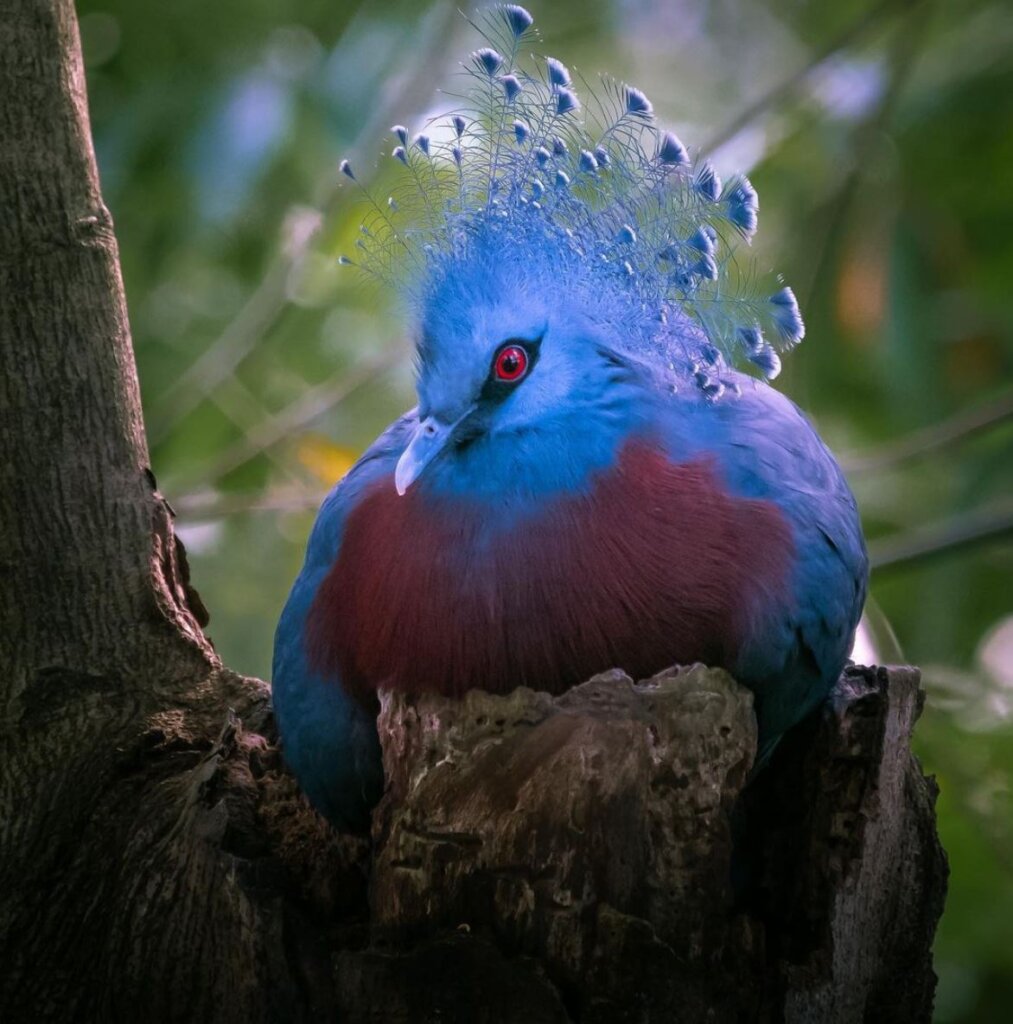
According to Instagram user @alines_animalworld, crowned pigeons typically leave the nest after about a month, but they still rely on their parents for food and support for another 6-7 weeks. These birds have a diverse diet, including seeds, fruit, and even insects.
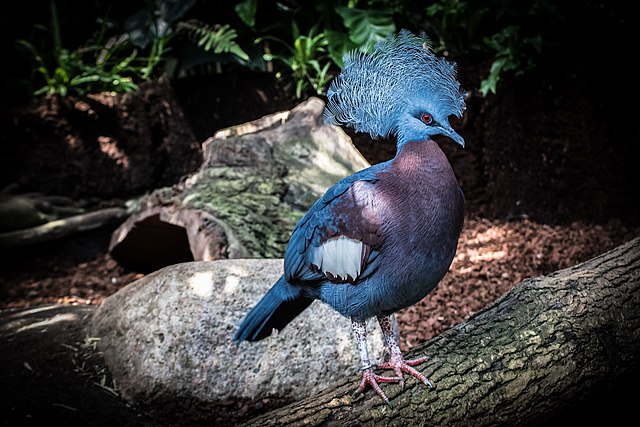
The bird genus has an average lifespan of approximately 20 years, but unfortunately, they are currently facing endangerment as a result of unrelenting palm oil production and the illicit trade of caged birds. The image credit goes to Dennis Skyum/ CC BY-SA 4.0.
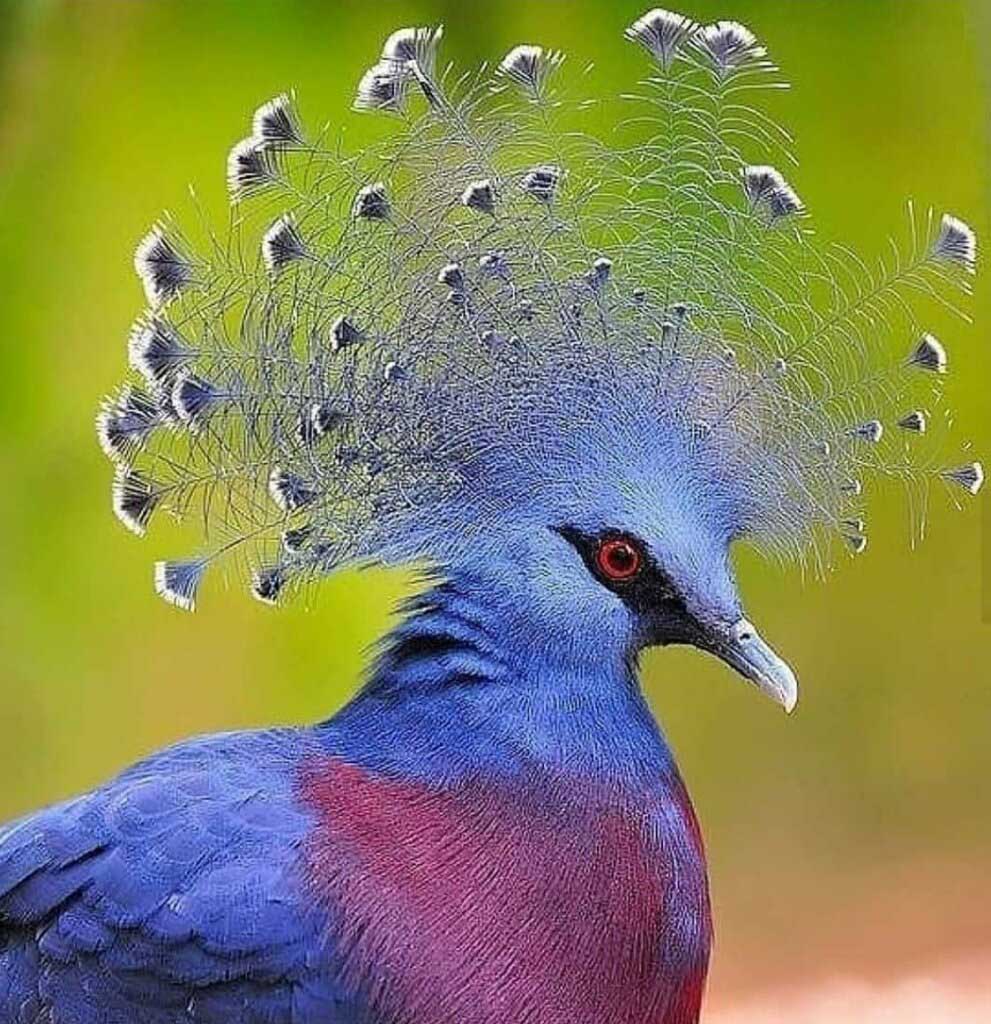
The credits for the image go to BestShotz Birds on Instagram.
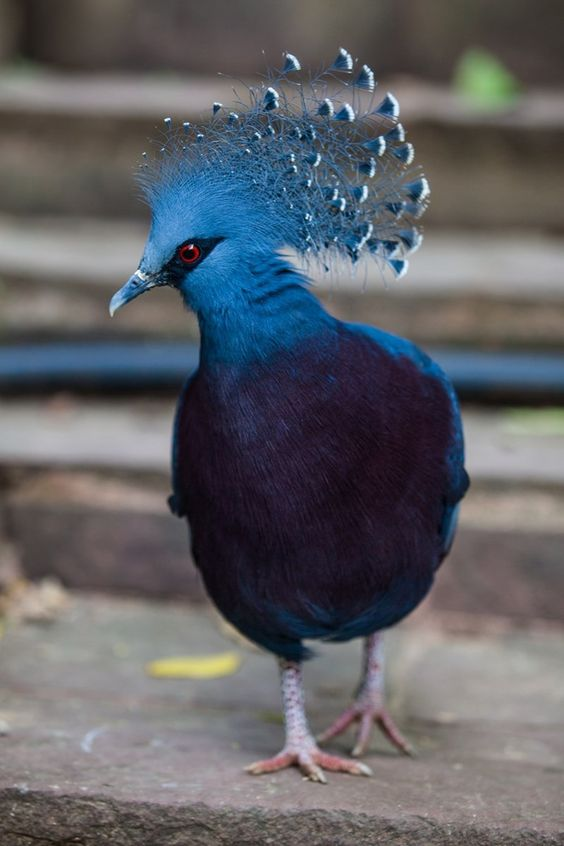
Take a brief pause to observe these impressive birds in motion. Additionally, make sure to spread the word about this post among your loved ones and acquaintances.



